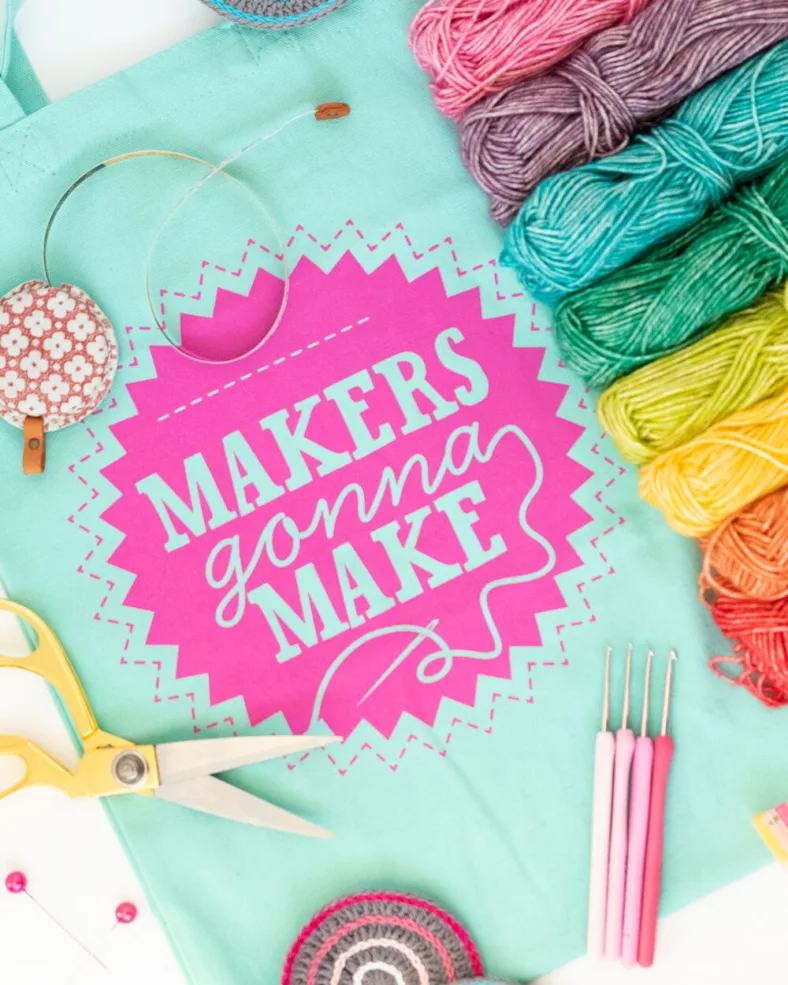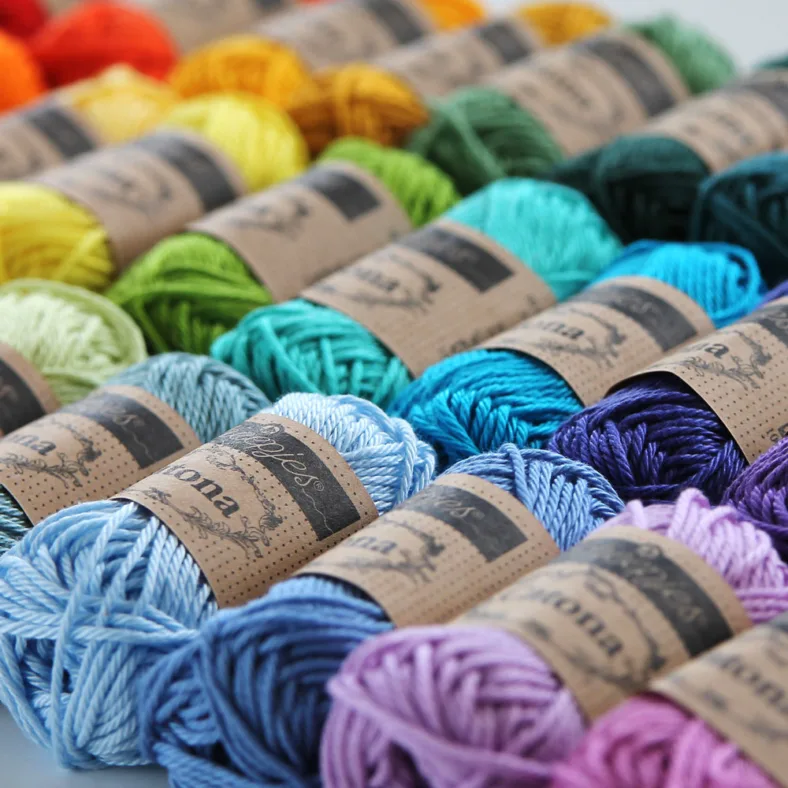When crocheting in public, you don't want to know how often I've been asked what kind of socks I'm knitting. My usual reply is 1) It's not a sock and 2) It's not knitting.
However, I completely understand that a novice might get confused between knitting and crochet. They're both yarn crafts, and you use sticks to make loops, right? Well, while knitting and crochet have many similarities, they also have some very important differences. I'm here today to tell you more. Read on, and you might end up with a new hobby!
Difference between knitting and crochet
1. Tools
Knitting: Needles
One of the major differences between knitting and crochet is the tools you are using. For knitting, you use knitting needles. These are pointy sticks that help you move loops from one needle to the other. Most distinctly, you use two or more. You can also use circular knitting needles. These needles have a wire between them, allowing you to transfer stitches more easily. This is particularly handy for larger projects like blankets that don't fit their stitches on a single needle.
Crochet: hook
For crochet you use a single hook: a crochet hook. It differs from the knitting needle because it has a literal hook on the end. This helps you to pick up the thread that you need to create basic crochet stitches.
A hook is also shorter than most knitting needles. It's often not longer than your hand, while a knitting needle can be up to 30cm. One type of crochet hook that looks like a circular needle is the Tunisian crochet hook. Tunisian crochet is a hybrid form of knitting and crocheting. It's an art in itself, and it's gaining popularity!
There are a couple of basic tools that you can use in both crafts. Scissors, needles and stitch markers are used in both crocheting and knitting.

2. Technique
Knitting: Interlocking loops
When you knit a knitting pattern, you create rows of interlocking loops. The loops of yarn are twisted onto each other to form a stretchy fabric. Knitting stitches like the stockinette stitch are made by twisting the loops in certain ways. Also, knitting uses less yarn compared to crochet.
Crochet: Creating one stitch with multiple loops at a time
Crochet is different. You use the hook's point to pry into a stitch from your previous row and then make a loop with your yarn, which you loop back into other loops. It's a more complicated form of looping that goes around complete loops, not only around one strand like knitting. This also means that crochet fabric can be much more stiff compared to knitted fabric.
Fun fact: If you drop a loop while knitting, it unravels vertically down to the first row, much like the fabric of pantyhoses does. Luckily, you can also pick up the dropped stitch and fix it quite easily with - you never guessed - a crochet hook!
3. Projects
Knitting: Garments, delicate shawls
This is a controversial subject because, technically, you can make all projects with both crafts. However, due to the stretchy fabric, knitting lends itself better to delicate projects or the types of projects where shape is really important. Think lace shawls, fitted garments, socks. Knit fabrics are supple and look elegant. However, they are also delicate, and a snag can mean pulling a section of your project out of shape.
Crochet: Blankets, home decor, bulky garments
Because crochet uses thicker loops, I find crocheted fabric much more suited to projects that must withstand a lot of wear and tear or where elasticity is not necessary—blankets, pillows, appliques, you name it. However, I've seen beautiful crochet socks and stunning knitted blankets, as long as you pick the right yarn and hook for the project. There is something out there for everyone! It's a great excuse to try out different projects and different styles.

4. Yarn
Knitting: Natural fibers, Delicate yarns
Again, opinions differ; technically, you can use any type of yarn for any craft. However, as a general rule, delicate yarns and natural fibres are exceptionally suited to knitting. Knit stitches show off the yarn, its subtleties, colour changes, and softness. If you have an Alpaca blend, you'd be amazed at how great it looks and feels in a knitted shawl.
Crochet: Cotton, Acrylic yarn, crochet thread
Depending on the project, acrylic yarn and cotton are great for crochet. They usually come in various colours and are sturdy enough to be thrown in the washing machine. They also make learning crochet much easier—these threads don't split easily. The Alpaca blend you knitted that amazing shawl with might be too thin or splitty to crochet with. With a lot of patience and perseverance, you can still use it, but that doesn't necessarily make it an enjoyable experience.
Another type of yarn that's very suited to crochet is (it's in the name) crochet thread. This is thin, very firmly spun cotton, often used for crochet projects like doilies or curtains or whatnot. While it used to be only available in white and ivory, nowadays, it comes in as many colours as regular cotton.

5. Stitches
A major difference between the two is the stitches you use. In knitting patterns, you find stitches like:
- Knit stitch
- Purl stitch
These two basic stitches are the foundation of knitting. Together, they create different compound stitches, like a stockinette stitch.
Crochet patterns use stitches like:
In crochet, the 'single' or 'double' (or 'treble', etc.) refers to the number of loops on your hook. You can create compound stitches like Popcorns and Catherine wheels with these basic stitches.
Of course, there are many more stitches out there. If you want to look into them, Youtube or a good crochet or knitting book is your friend! I also have plenty of tutorials on my blog to show off the crochet stitches.
6. Mass production
Knitting: can be made on a machine
There are knitting machines that can knit fabrics much faster than our grannies could. Because knitting is, technically speaking, the act of looping loops like chicken wire, engineers could make a fully automated knitting machine that uses little hooks to twist and manipulate the thread like a knitter's hands.
Crochet: can't be made on a machine
Crochet can't be made on a machine, only handmade. If you see a crochet garment or applique in stores, you know it must have been made by hand. (Unfortunately, that doesn't necessarily mean it's priced according to the effort).
Of course, there are many more subtle differences between the two crafts. With the information above, you can decide which of the two you want to use to make your project or which one you want to learn (first). It usually comes down to proficiency and personal preference. Trying your hand at something new is the best way to challenge yourself and fall in love with a new hobby!

Comments
Be the first to comment to this post!